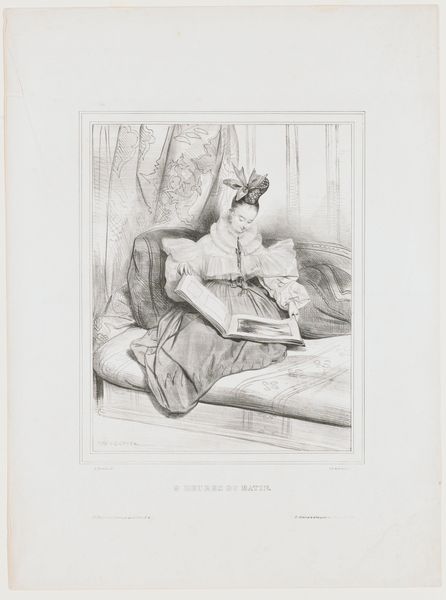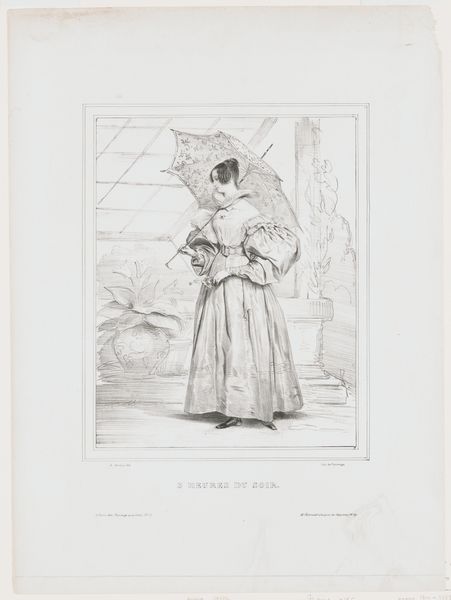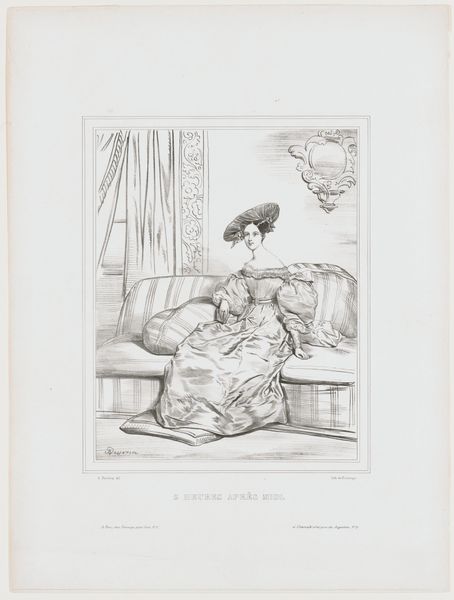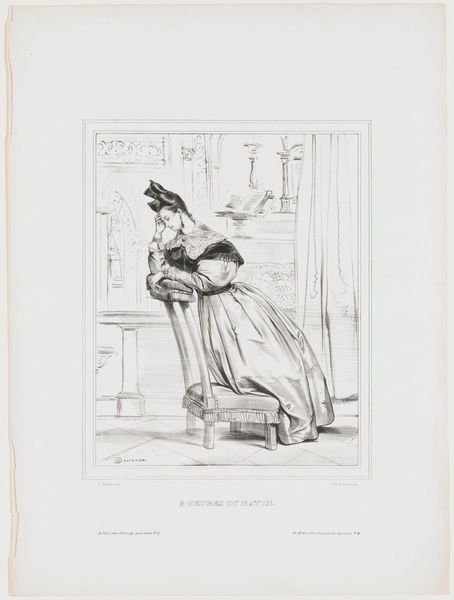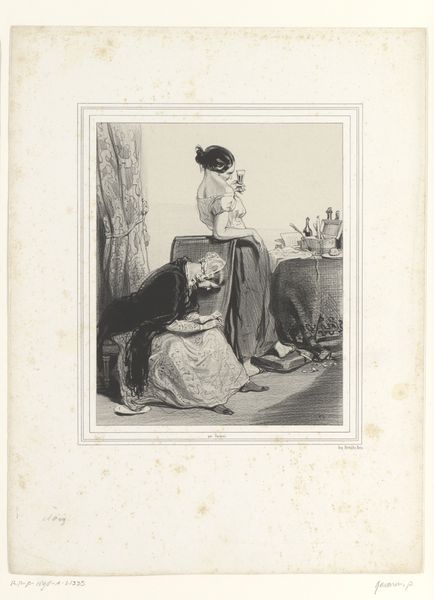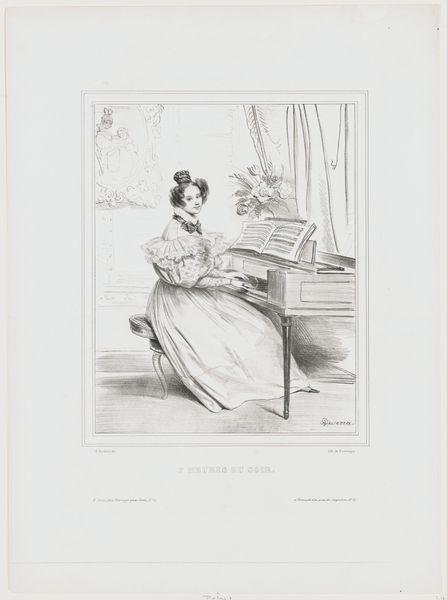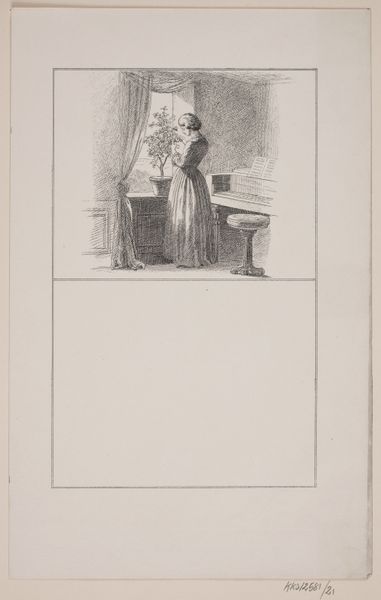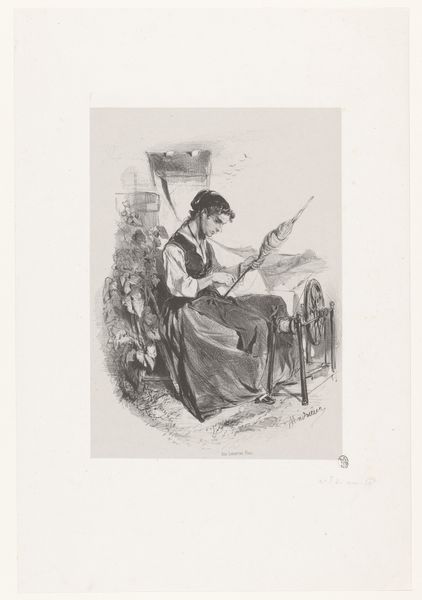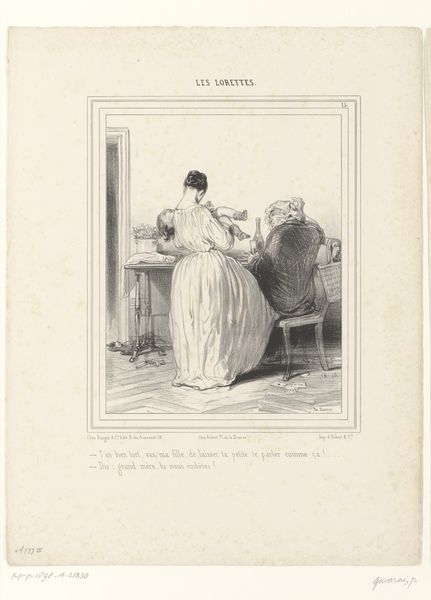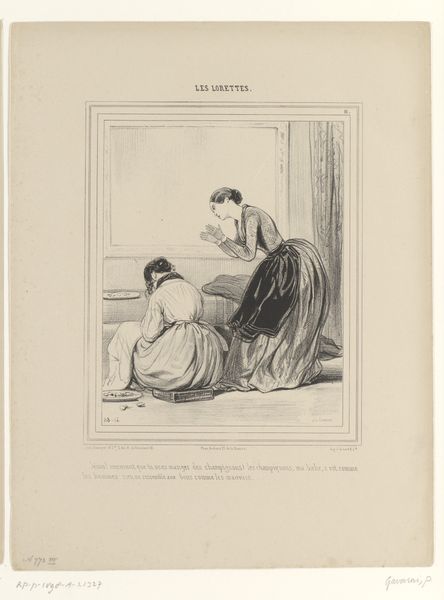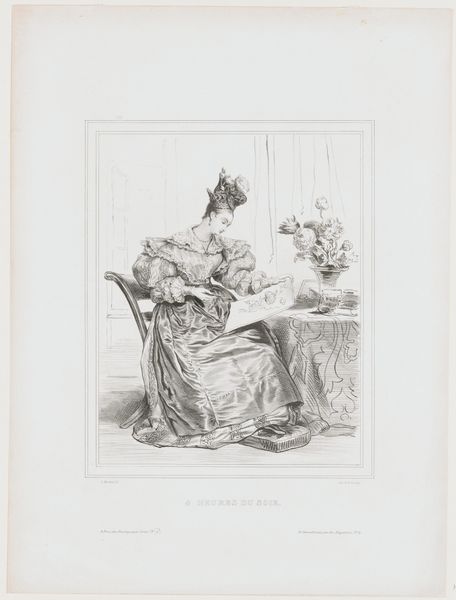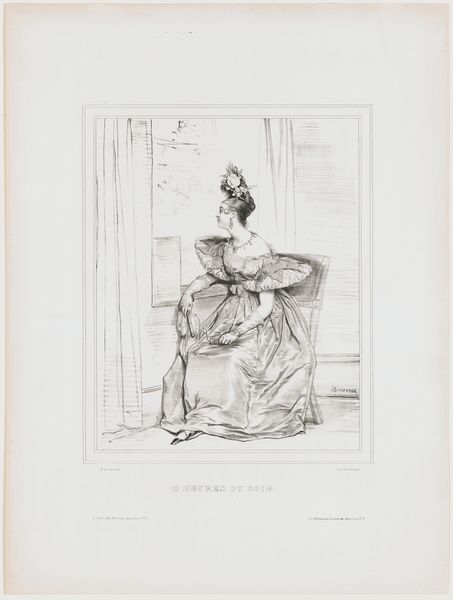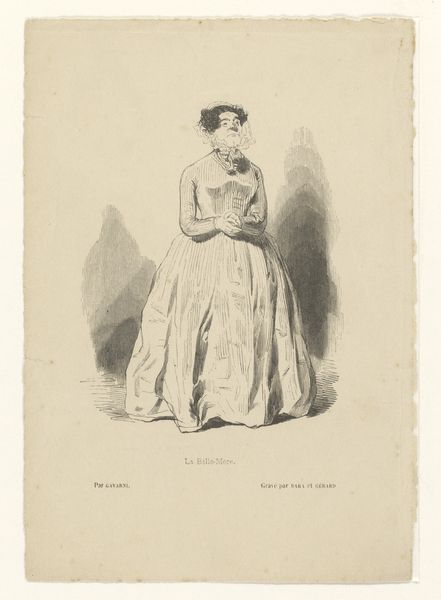
drawing, lithograph, print, paper, pencil
#
portrait
#
pencil drawn
#
drawing
#
lithograph
# print
#
figuration
#
paper
#
pencil drawing
#
romanticism
#
pencil
#
line
#
genre-painting
Dimensions: 13 1/4 x 9 1/4 in. (33.66 x 23.5 cm) (image)
Copyright: Public Domain
Curator: Achille Devéria created "Heures Du Matin. Mme. Clemence Peyron" around 1830. It’s currently held at the Minneapolis Institute of Art, rendered as a lithograph in pencil on paper. Editor: My first impression? Serene melancholy. The grayscale tones soften the scene. The woman’s gaze carries a wistful air; a private world rendered for public consumption. Curator: It certainly reflects Romantic sensibilities. Let’s consider how this imagery may speak to constructions of feminine identity during that era. We see her indoors, domesticity is imposed but she also seems self-possessed. There is an open window; is this desire or lack of opportunity? Editor: That open window – a motif that speaks of possibility and confinement simultaneously! But observe how Devéria situates the sitter amongst accoutrements of beauty - a dressing table with a mirror propped. Curator: Indeed. Mirrors function symbolically as markers of female vanity and self-absorption. The mirror’s inclusion is a suggestion about her role as perceived in relation to her beauty and appearance. What narrative are we creating in this instance; and do the historical frameworks support a divergence in our assumptions? Editor: Intriguing. It hints at Narcissus, but also female identity. It reinforces her presence, though through reflections – literally filtered perspectives. And notice that mirror image is not aligned in likeness! A conscious subversion by Devéria of literal meaning and further indication of inner narrative? Curator: It asks whether we can consider representations of women in this era outside of purely decorative roles; as agents. Was the gaze upon them purely one of sexual desire or was there something else entirely at play? Was that something born solely out of their identity in social positioning or not? Editor: The work is ripe with layers, blurring reality with idealized image, constraint with an implied reaching. What could the sitter be searching for in that self-reflection; or the open window, or her life beyond this moment in time? Curator: Ultimately, our dialogue reveals how much of the power resides in who gets to tell that story, even now. Editor: And how symbols subtly steer the narrative, allowing us to glimpse deeper, perhaps conflicting, truths.
Comments
No comments
Be the first to comment and join the conversation on the ultimate creative platform.
